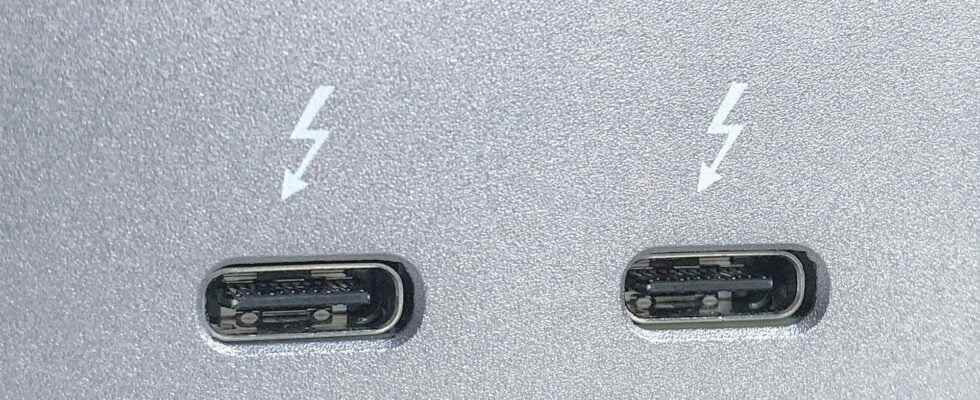Whether you are a PC or Mac user, you have inevitably seen new connectors flourish on laptops in recent years. USB-C and Thunderbolt have almost completely replaced other ports for charging and data transfer. But what really differentiates them from each other?
You will also be interested
Despite their almost identical shape at first glance, theUSB-C and the Thunderbolt 3 have several differences. To put it simply, the Thunderbolt 3 is a connector that uses the USB-C standard and adds several improvements to it like better gears charging and data transfer. This means that all Thunderbolt ports are compatible with USB-C connectors. But then why not prefer Thunderbolt to USB-C on all our computers laptops?
Proprietary technology
Unlike USB-C, which is the work of a consortium of companies and can be integrated into any device without paying a fee, Thunderbolt is a technology exclusive to Apple and Intel the first versions of which used MDP (Mini DisplayPort) connectors. It is therefore impossible to find a computer equipped with a amd processor compatible with this standard. However, Apple has shown with its Apple Silicon Macs that Thunderbolt does not necessarily require a processor Intel to work.
In its early days, the Thunderbolt was to be used exclusively for fast data transfers and high display resolution but got beefed up with remarkable charging capabilities in its third iteration, allowing it to charge a device to 100 watts in some cases. It is also this iteration that will begin to use USB-C as a connector instead of the Mini DisplayPort.
How to tell USB-C from Thunderbolt 3 at a glance?
To find out quickly if the USB-C ports of a computer are Thunderbolt compatible, just check for the presence of a small arrow in the shape of aflash above or next to the port. On Macbooks released since late 2016, these arrows cannot be found because all USB-C ports on these devices are equipped with the technology. If in doubt, just check the technical data sheet of your computer on the manufacturer’s website. Also worth noting is the need to use a Thunderbolt 3 compatible cable to take advantage of the standard.
What devices take advantage of Thunderbolt 3?
More and more peripherals are starting to integrate a Thunderbolt port as a replacement or alternative to other connectors. Displays like Apple’s Pro Display XDR are good examples since Thunderbolt allows a Macbook Pro to display 6K resolution video output while charging. The fast data transfer also allows the use of external graphics cards (eGPU). We also mention the External SSDs that allow high-speed copying of large files to and from the computer.
Interested in what you just read?
.
fs2
